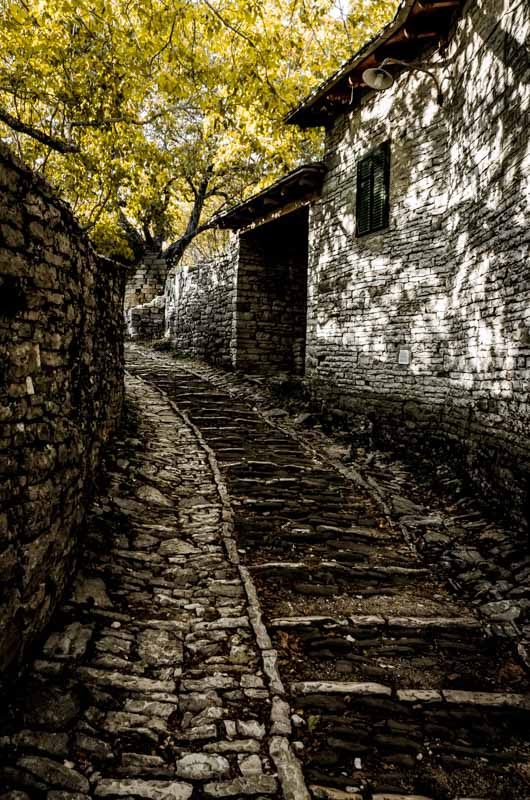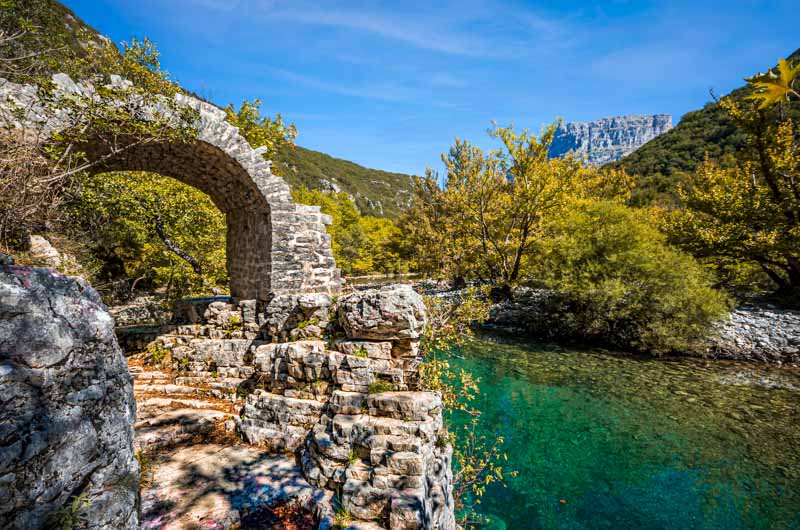
Every rock and stream is a myth
Patrick Leigh Fermor, Mani
The horizon is jagged with rocky peaks.
The Greek summer fades out slowly. But the icy mountain air, the fireplaces already lit in the houses, and the sudden rains make it clear that the season is changing.
A fresh wind pushes the last warmth away.
The Pindus mountains are the last splinter of the Balkans.
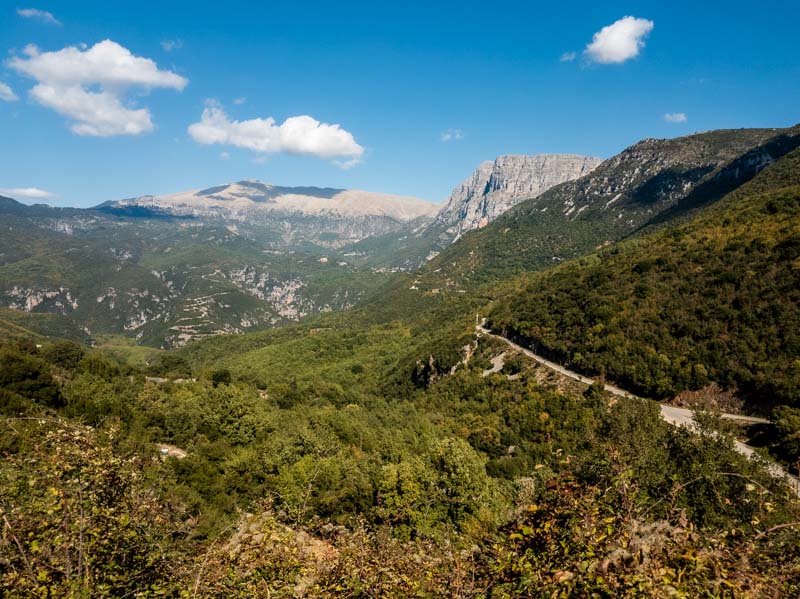
From the north of Greece, the chain continues towards the south-east until the Peloponnese. But that border between the Ionian and Aegean seas is very far from where I am now. I’m in the north, in Epirus.
High, bristly mountains, difficult to cross. Steep valleys, furrowed at the bottom by impetuous streams and dotted with villages with stone houses and slate roofs. Between the rocks and the woods, there are ancient monasteries.
This is Zagorohoria.
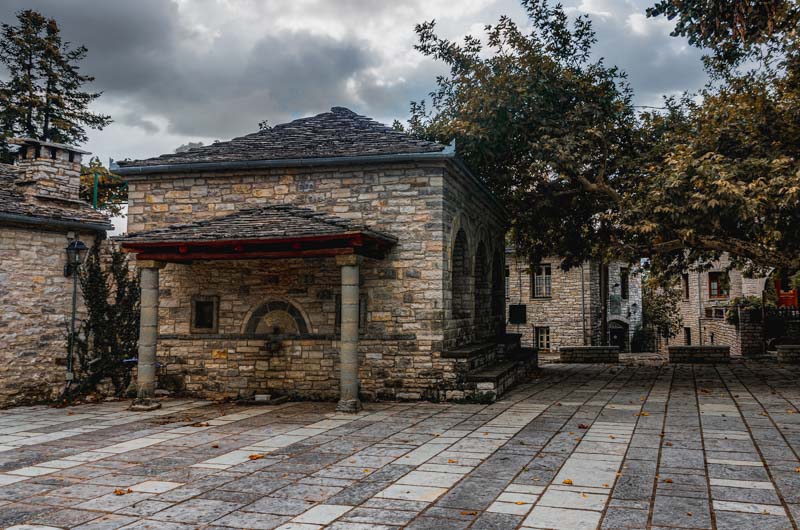
There are many villages. Aristi, Papingo, Monodendri, Vikos, Dilofo, Kapesovo, Tsepelovo, Kipoi just to name the major ones. Stone houses in a circle around the main square, where the church also stands.
This land is also rich in streams.
Since the days when the carriage road did not exist, these villages have been connected by ancient paths. The streams were crossed with stone bridges. It all dates back to the 18th century when this area of valleys and mountains was a troubled province of the Ottoman Empire.
The bridges are made of stone, humpbacked, with one, two and more rarely three lights. They are very steep. One wonders how the wagons loaded with their merchandise could manage to pass over.
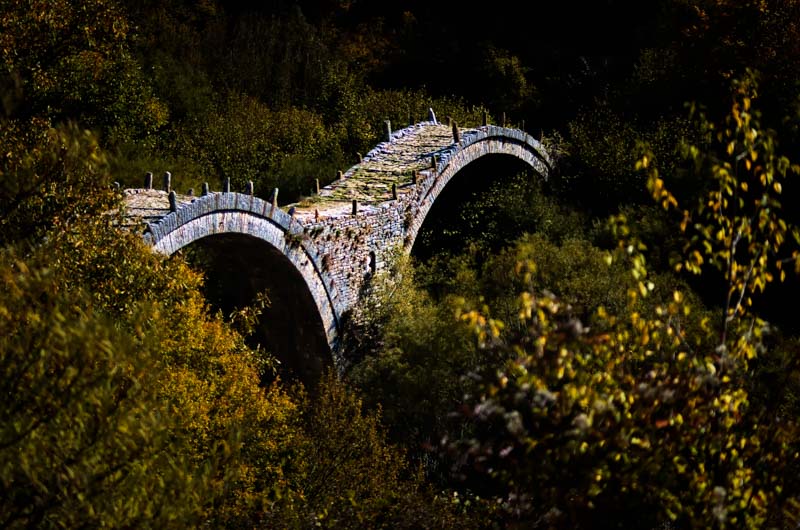
ARISTI
Streets and cobbled alleys. Few people, almost no car noise. The sun reflects on the stones of the houses, creating small pools of light and deep shadows.
A coffee bar in the village square is the place where you can sit in the shade of a pergola and submit to the Greek rite of coffee.
Greek coffee
Already at the time of ordination, you are subjected to a kind of interrogation.
“Would you like a coffee? And what kind of coffee? “
I honestly do not recommend to anyone an Espresso, in Greece. So a Frapé? They prepare by shaking dried coffee and ice. It can be an idea.
“And would you like it with or without milk?”
With this breeze coming down from the mountains, perhaps a Greek coffee is preferable. Ellinikò, which is a direct descendant of Turkish coffee. But don’t tell it around and don’t call it Turkish coffee if you want to avoid international complications, even at a diplomatic level.
It is called Greek Coffee.
“And would you like it with a glass of water or without?”
“And how much sugar?”
Variglikos (very sweet)? Glikos (sweet)? Metrios (medium)? Sketos (no sugar)?
At the end of the interrogation, after a while, the coffee cup finally arrives. You can get ready to taste it, not without having waited for the coffee powder to settle on the bottom of the cup.
Around, there is a landscape made of rocks and woods. Little inhabited, little exploited. Many pastures, few crops. The beans from these areas are excellent.
In search of Feta
While enjoying the coffee it occurs to me that this is one of the regions where Feta is produced. I love Feta. I want to try the taste of the real, original one. And I ask where I can find it.
“The nearest supermarket is 20 kilometres away.”
There is something odd in the way the Greeks answer. The first response is seldom what you need. It is as if they wanted to disorient you. Or maybe they want to know if you’re really interested.
“Supermarkets where I live also have Feta“
Then the cashier understands and sends me to a small house a bit out of the centre.
A shrunken lady with a red shawl over her shoulders opens the door. She wears gigantic glasses. Her hair is sparse and unlikely curly. We understand each other by gestures and with a single word: Feta.
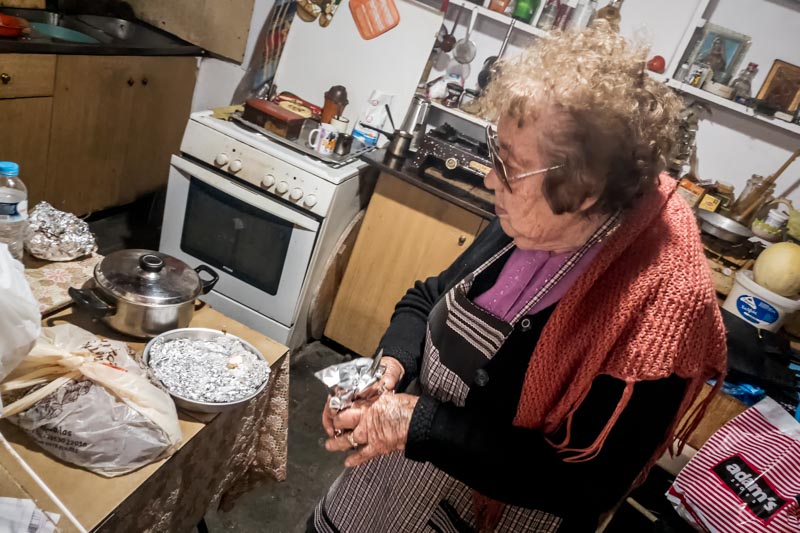
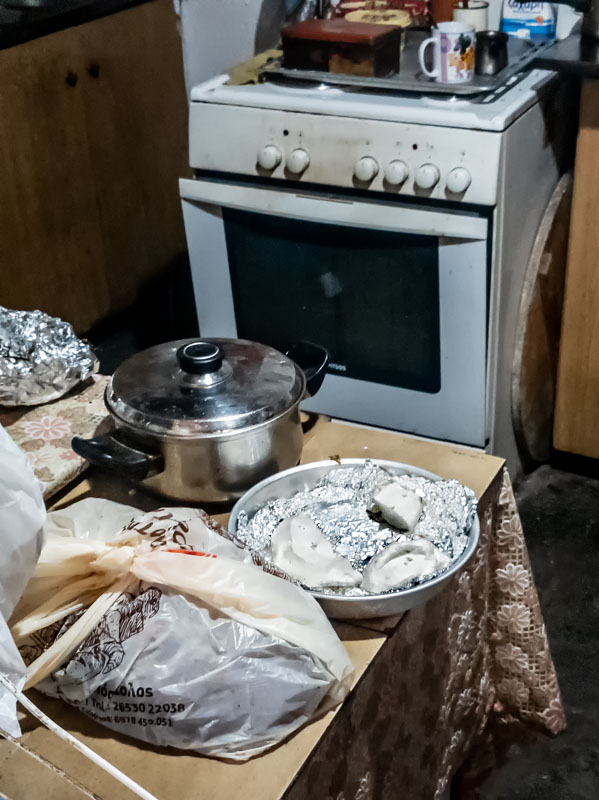
She gestures for me to enter. Her house is in a cosmic mess. I disentangle myself among a stove, objects scattered all over the concrete floor, overturned containers and wreaths of garlic hanging on the walls.
She opens a cabinet, takes out an aluminium container and finally, there it is, the Feta made with sheep and goats from her house.
It is a tiny bit, but she has no more. I would have to wait for the next production.
The price is two Euros. It also includes a half-smile when I say goodbye and permission to take a look at the animals that have collaborated in the production of this goodness. They graze peacefully at the back of the house.
KIPOI
The name of this village means garden. Again stone houses and slate roofs that cluster at the lowest point of the valley. The tavern is welcoming and refreshes before heading towards the search for the stone bridges.
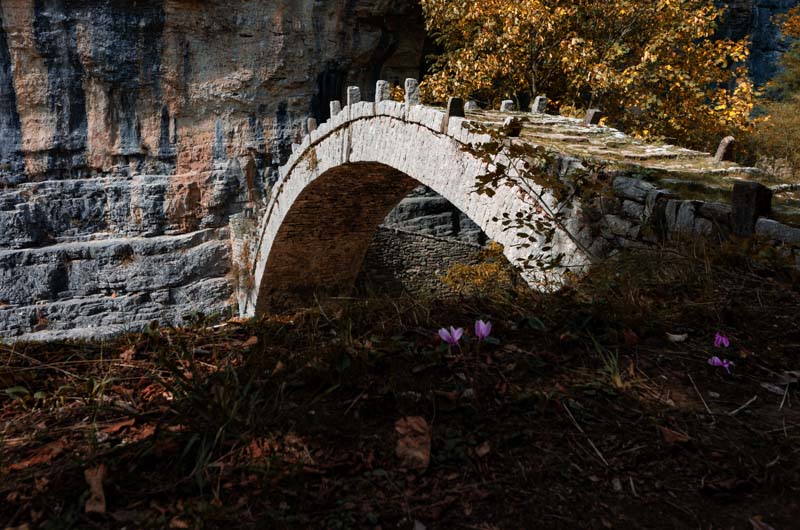
The first one is Lazaridis.
To get to it, I follow a path in a narrow valley, shady and dotted with cyclamen. Lazaridis is a single-light bridge that crosses the Vikakis stone bed and comes out right in front of a steep cliff. From there, multicoloured ropes and hooks of climbers dangle in the wind, like Tibetan votive flags.
It is autumn, with splendid colours all around, but after the summer drought with little water in the rivers. At certain points, the stream that should flow under the bridges is completely lacking.
It is the right time for a walk that I have dreamed of since I was a child.
I want to see the river as water sees it when it flows.
ALONG THE RIVER
From one of those stone bridges, I drop down and walk along the stony shore. There are puddles of water but they are easily passable.
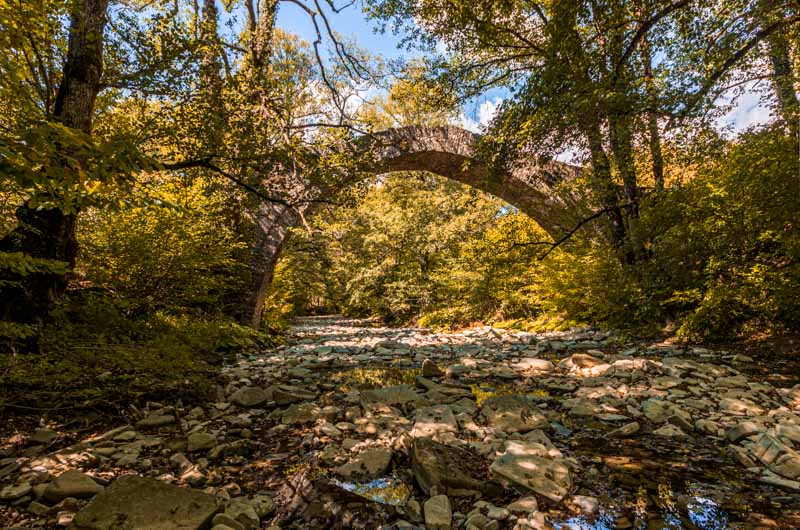
I walk slowly, swaying through puddles and pebbles. Trees often completely hide the sky under their red-green blanket. There is a swarm of small animals among the exposed roots along the river. Noises and pops confirm to me that larger animals are around but don’t want to be seen.
Going further, the stones get bigger. It is the introduction to a rapid waiting for its river, which I descend like a normal trekker.
With no running water and little wind, the silence is idyllic.
A few more uncertain steps on unstable stones and here is another bridge. This is called Mylos and is bigger. It led to the village mill, which is still there, on the other side, since the mid-eighteenth century.
The river, or rather its bed, continues its path towards the valley and I go with it. Now the path is exposed, the trees have moved away and the sun is beating down even though it is October. I’m on a river bed, but there is no water to quench my thirst.
Surprising cairns
There are no more animal noises, only the roar of some car passing along the road, a few meters higher.
Behind a bend, another bridge. Three stone arches hide a surprise.
On the other side, the river widens. When there is water, there will probably be a pond here. In the middle of this hypothetical pond, there are dozens of cairns, the mounds of stones usually built to mark a path.
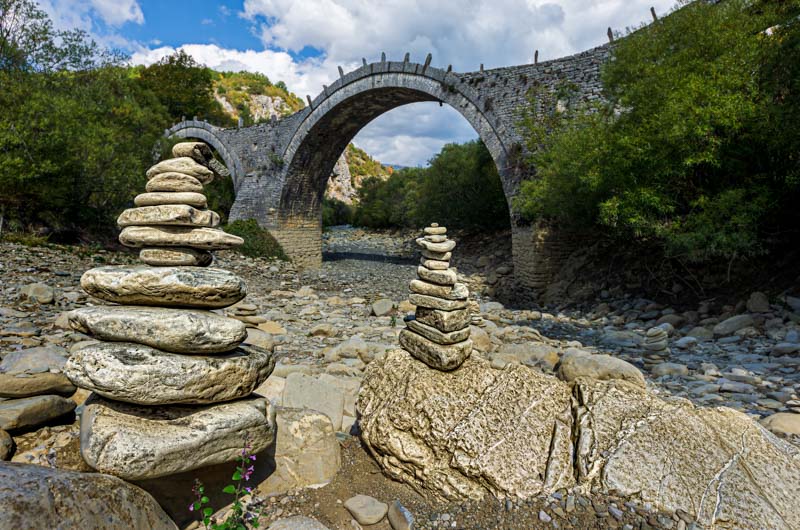
Here they mark a landscape and the waiting for the water to pass again under the bridge.
The shape of the cairns reminds the profile of the rocks of the deep canyon in which the river descends soon after. This is where I have to leave my river route.
MONODENDRIS
You have to come to Monodendris to get the best view of Vikos Gorge.
Look at it from above, before eventually deciding to cross it all. It’s an intense and tiring experience. But it pays off with splendid views, almost untouched nature and lots of silence.
At the end of the village, there is the monastery of Moni Agias Paraskevis. She’s the saint who in popular belief heals headaches.
It is little more than a chapel, built right on the edge of the ravine, with a few small cells around it. All very intimate and collected, as per Byzantine tradition.
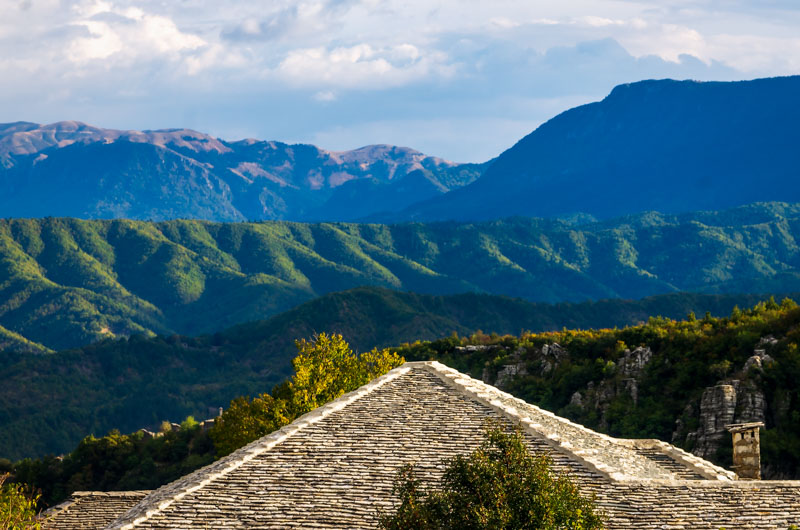
And as per Byzantine tradition, there is a magnificent view. The kind of view that Orthodox monks have always known how to get. It helps to focus on meditation and prayer.
THE VIKOS GORGE
This time the panorama is on what the Guinness Book of Records rates as the deepest gorge in the world concerning its width.
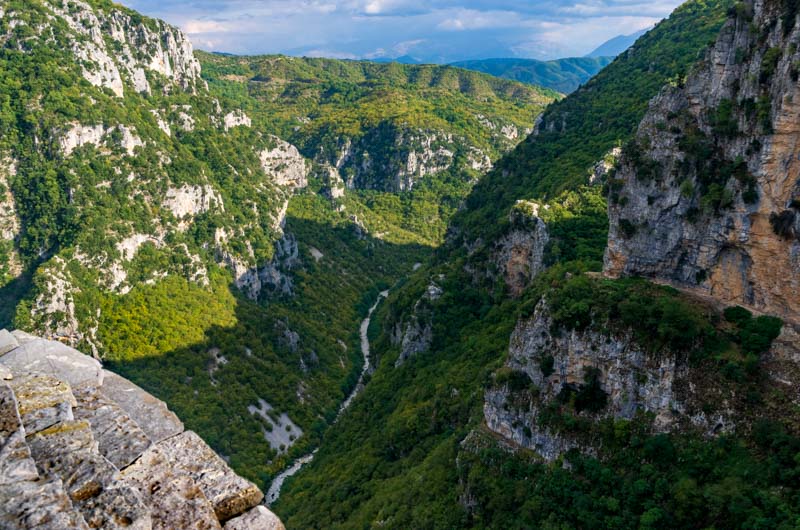
The path that comes out of the Vikos Gorge, after the previous harshness, finally goes flat along the river bank, among the trees. I walk past the remains of what was perhaps an ancient temple.
Shadows, green water, golden reflections. Silence.
Through a bush and among the branches, against the sun, I see the silhouette of a large animal, with its paws in the water. It is too big to be an otter or a coypu. It is a bull grazing along the river.
I am now a few kilometres from Aristi and the gorge has widened into a shady valley.
The river flow slows down and widens. The water is so transparent that you could count every stone on the bottom. They say that the Voidomatis is one of the least polluted rivers in Europe.
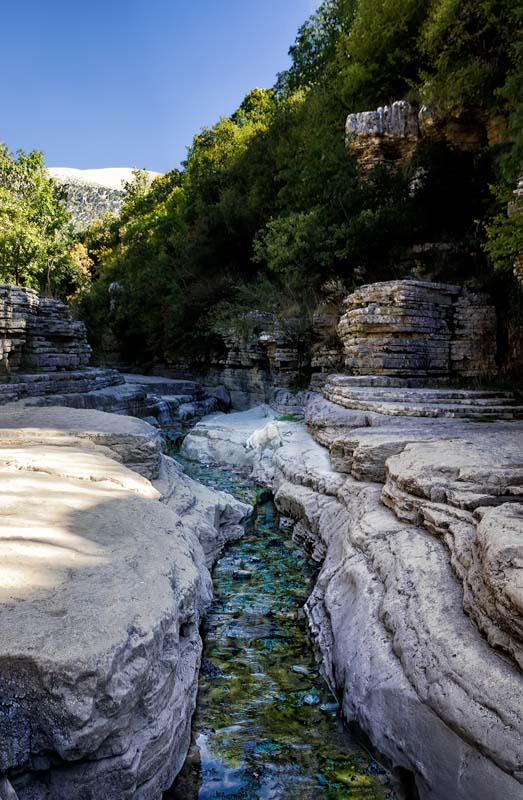
I see a dinghy go by full of people ready for rafting. When their low voices disappear, the silence is almost perfect again. You only hear the water flowing slowly.
End of the path
Upon my head, there is another bridge.
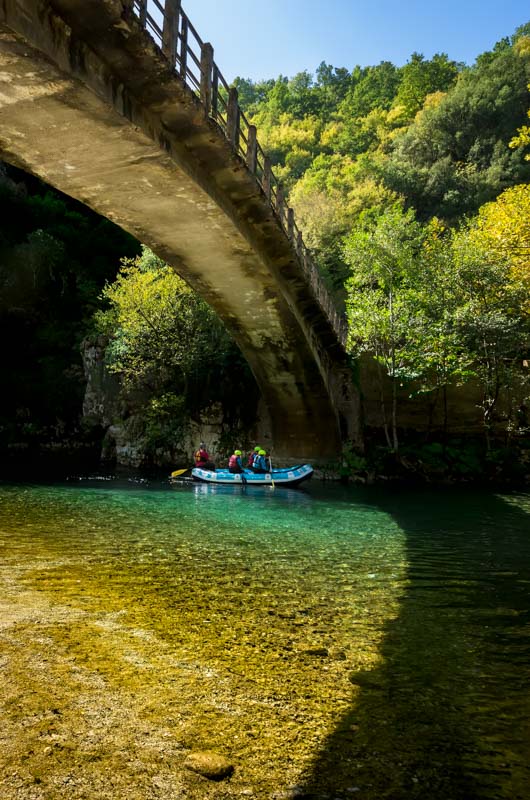
It is narrow and very steep. At least for a car.
The three arches on which it rests make it one of the largest stone bridges of the area. Above all they make it look like a huge caterpillar climbing over the river.
Going down towards the valley, the Voidomatis swells, thanks to new tributaries. This river is only 15 kilometres long. Just before reaching the Aóos of which it is a tributary, it offers a last waterfall crossed by another stone bridge, Gefira.
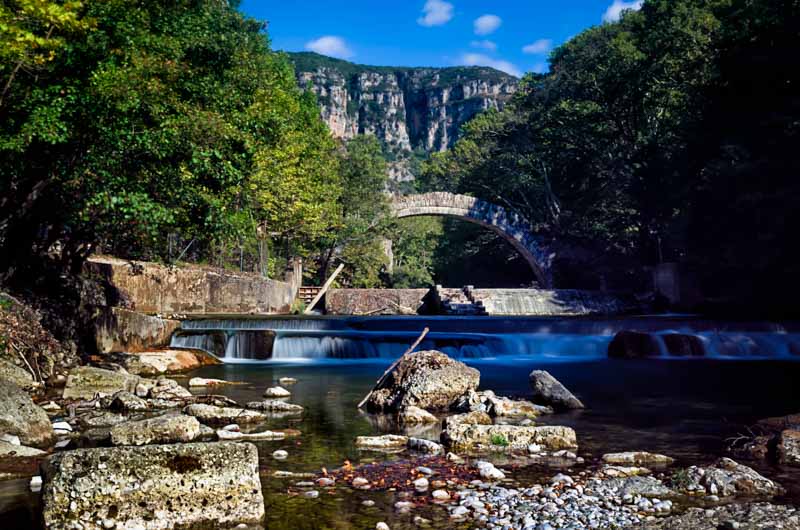
Then, the river slows down again. It seems to take its time before going to pour into the Aóos.
The clearing is lined with willows, with inviting benches in the shade.
The church is closed. There is no one. Everything invites you to take a placid nap before heading to the Ottoman mysteries of Giannina.
Do you need a visa to enter Greece?
Check it out here:
Did you like it? For more beautiful photos and travel stories, just use the menu above and browse the site. Do you know that you can send any of my images as an e-card?
Just choose your favourite image, press the e-card- button down on the right and that’s it, the pic is ready to be sent to your loved ones! Just give it a try, it’s fun and it’s free!
Would you also like to read all my upcoming travel stories? Just click here and subscribe to my newsletter.
I will mail you only when I release a new article. Your information is 100% safe and never shared with anyone
